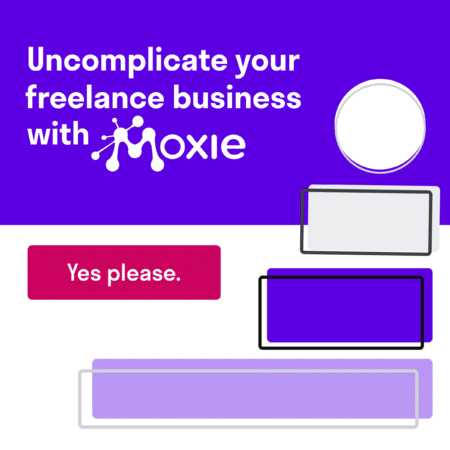If you have ever tried to get a loan, apply for government benefits, rent an apartment or open a new credit card—basically, if you have had to use the banking system in the last one hundred years—you have likely been asked to prove self employed income.
And the minute you say the words, “self employed,” you see the looks on everyone’s faces turn to a cringe.
This isn’t because they don’t respect your work as a business owner, but one of the many challenges of being a self employed or freelance worker is dealing with systems that are set up for a full-time employee, W2 workforce.
It is easy for banks to pull up employment records and tax returns for employees who earn the same amount, month after month, whose employers keep records on their behalf.
If you need to prove self employed income, the process becomes much more involved. Because your income likely varies radically over weeks, months, and years, and because you are more than likely your own record keeper, you will have to get a bit more creative with the documentation that you provide.
Not to worry, it’s not as difficult as banks and loan officers like to make it sound. And, if you have been freelancing for a long time, you are likely used to making adjustments and making your way of life fit into a process set up for someone else.
In this article, we will explore what people mean when they ask you for proof of income, why you should bother, and the different types of documentation that will help you navigate any situation where you do need to know how to prove self employed income.
Together, we will wipe that half-alarmed look off of your mortgage broker’s face, because you are so prepared!

What is proof of income?
“Proof of income” just means official verification in the form of documentation that you make the amount of money you say you do. Anyone who might be asking you for money for any type of payment on an ongoing basis will want to ensure you are able to make those payments.
It makes sense. If someone gives you a loan, or lets you rent their property, or something similar, is taking a risk on you. When you know how to prove self employed income, that risk is lessened in their eyes and everyone feels better and is more willing to open up their pocketbooks.
In my time as a freelancer, I have been asked for proof of income when applying for health insurance, before signing an apartment lease, at car dealerships, when setting up our utilities, on credit card applications and when we bought our first house.
Sometimes I get pushback, and other times I have had people try to simply use my husband’s income instead (he is a traditional W2 employee). There have been situations where I have opted to just do that, but it never sits right with me. I am gainfully employed, I make a decent salary, and there is no reason I should not be able to get a loan in my own name.

So instead of stewing about it, I have instead learned how to navigate money, banking, loans and the rest from a self-employed standpoint. And I rarely run into trouble anymore.
It will always be easier (or at least, for the foreseeable future), to rely on W2 income if that is an option for you. But knowing how to prove self employed income helps you take charge of your own situation and your own finances.
Next time you are looking to upgrade your life in any way—financing a large purchase, moving into a new place, applying for insurance, getting a travel visa, joining a country club (hey, aim high, right?)—you will have all of the tools you need to make it happen.
How to prove self employed income with these 6 documents
Once you have been asked to prove self employed income, you might immediately start to panic a little bit inside. You probably don’t have the pay stubs that a majority of people just whip out to cross that first hurdle.
But anyone who tells you that pay stubs are the only way to show consistent income is either very ignorant or just lazy and doesn’t want to deal with other options. There are actually a myriad of ways to prove self employed income, and many of them are actually pretty simple. Let’s go over some of the most common ways to prove self employed income, so you know what will work for you and how to get a hold of the different documents.
1. Bank Statements
That’s right, you can prove self employed income just by providing your bak statements. Assuming you have steady deposits for at least 3-6 months, depending on the type of loan or other program you are applying to, most institutions will be able to average out your income and give you terms based on that information.
Of course, this becomes much easier if you have a dedicated business bank account for your freelance income. That way, every transaction is related to your work, and you can simply print off several months worth of statements and provide those.
If you use your personal account for work, you will need to highlight all income deposits so that the other party can clearly see the amounts you are bringing in related to your business. You may also need to provide further proof that this is in fact income.

2. Tax Returns
If you have been freelancing for at least two years, probably the simplest way to prove self employed income is through your tax returns. You can provide copies yourself, or in some cases, banks or landlords that are part of a large corporation may be able to pull those records themselves.
If they are filed correctly and everything is calculated right, your tax returns will show that you are, in fact, self employed, and that you have had a stable annual income. Your income will likely change from year to year, but as long as you’ve had a high enough income to qualify for whatever service you are looking into for multiple years, you should be good to go.
Of course, if you aren’t doing your taxes properly or if you have a lot of business expenses included that make it look like your overall income is low, your tax returns will not tell the full story of your earnings, so keep that in mind. It may be that a different method of how to prove self employed is a better fit.
3. 1099s
In my experience, not all clients file a 1099––it depends how big the business you do work for is, how much you bill them over the course of a year, and just whether or not they understand the ins and outs of contracting. (Aside: you are still required to pay taxes on your income, even if your client is not reporting it!)
But if most or all of your clients do submit a 1099, and you have worked for at least two years as a freelancer, then those 1099s are a great tool for how to prove self employed income.
A 1099 Form is a formal tax document detailing the amount that each client has paid you annually. These forms are submitted to the IRS, and you are required to pay taxes on the reported income. Using these documents and adding the totals together gives anyone a clear picture of your annual earnings.
4. Invoices
To be clear up front: I don’t think a mortgage broker would accept your personal invoices as proof of income for a half million dollar loan.
However, if you are struggling with how to prove self employed income for something like renting an apartment from a sole proprietor landlord, or applying for government benefits, or if you need to supplement another form of documentation, your business invoices are one tool in your toolbox.

Invoices work best when they are consistent and official. If you use a program like QuickBooks, Wave, Bonsai, Honeybook, or one of the other great freelance invoicing softwares that are available, you will have clear records and printable invoices to help you show proof of income.
Even if your invoices are just an excel spreadsheet, make sure to number them and include a company logo. This lends credence to them when needed to show your earnings for any reason.
5. Pay Stubs
Wait — freelancers don’t have pay stubs, do they?
Actually, if you set your business up right, you can absolutely have pay stubs, and your days of wondering how to prove self employed income will be over!
When you have a business bank account, and you put all revenue into it, you can then pay yourself a salary out of the business.
To be valid, a pay stub needs to show both gross and net income, which means you need to calculate things like Medicare, Social Security and state and federal tax deductions. This model doesn’t work for everyone, but if your freelance business becomes large enough, using a formal pay stub can help propel you through a lot of legal hurdles, so it’s something to consider.
6. Accounting Software Statements
Again, when you use an organized system, it will always be easier to figure out how to prove self employed income.
A good accounting software like Moxie, Bonsai, or Lili will track profits, losses, expenses, etc., and you can generate reports based off of these figures. In some cases, a report like this can be used either as a sole source of income proof, or to supplement other documents like a bank statement.
How to prove self employed income when paid with cash
The documents listed above will work in most cases, but what if you have clients who prefer to pay you in cash? You wouldn’t be the first person to wonder how to prove self employed income when there is no digital or paper trail.
First, let me say this. If you have clients who insist on paying you in cash…I would think twice about taking them on as clients. It is not illegal to be paid in cash, but there are very few legitimate reasons someone would need or even want to do this.
Cash payments still count as income, and must be reported to the IRS. Sometimes, employers pay contractors in cash to avoid paperwork or possible taxes. Being paid in cash makes it harder for everyone to keep records. That doesn’t mean your client is shady, but it’s worth a second look.
That said, if you are working for family or friends, or a small organization that for some unfathomable reason still hasn’t set up a bank account and needs to pay you in cash, and you feel comfortable with the situation, go for it. Being paid in cash doesn’t mean you can’t use those payments as proof of income.
The first thing to do in these situations is to make sure that your bookkeeping is meticulous. Document every cash transaction and its date. Second, immediately deposit the cash into your bank account. This gives you an official record of the payment.
Now you have a bank statement and bookkeeping records—so next time you wonder how to prove self employed income, it is all right there in black and white.
If a lot of your business is transacted in cash, I would think seriously about setting up a legal LLC or sole proprietorship, with an accompanying bank account, and distributing a salary to yourself, with pay stubs. This can help not only with how to prove self employed income, but with avoiding a lot of headaches during tax season.
Start preparing!
Freelancers and other self employed workers will likely get sideways looks from financial professionals for a long time to come. An inconsistent income coupled with haphazard record keeping is a recipe for disaster when it comes to how to prove self employed income.
But it doesn’t have to be like that!
Being a freelancer is not an excuse for a disorganized business. In fact, working for yourself means that you should care more than anyone what your business records look like. You don’t want to make costly mistakes or have issues when it’s time to get a loan or file your taxes.
When you have meticulous records, you will have access to all of the documentation you need to prove your income as a self employed worker.
Keep the conversation going...
Over 10,000 of us are having daily conversations over in our free Facebook group and we'd love to see you there. Join us!

